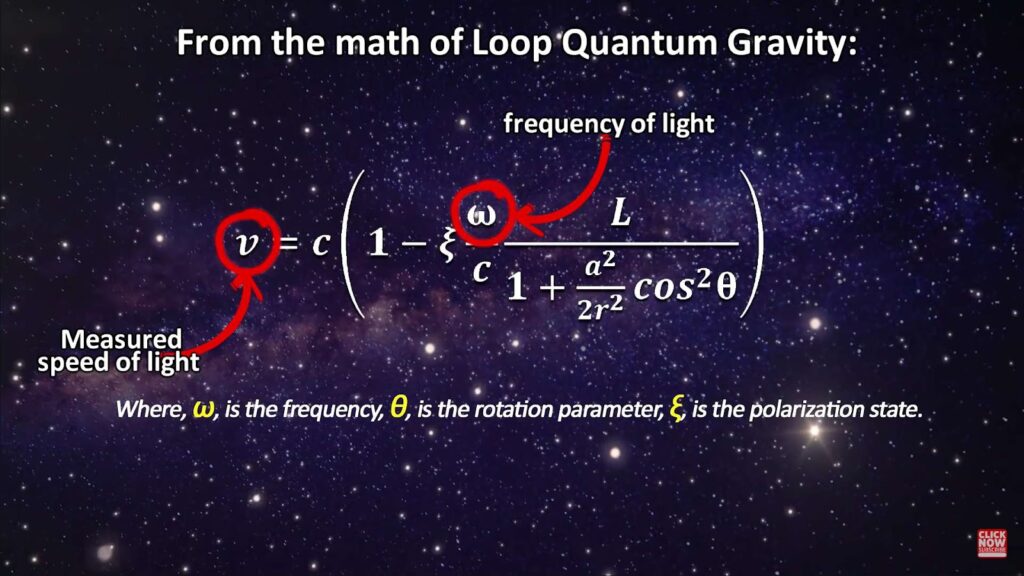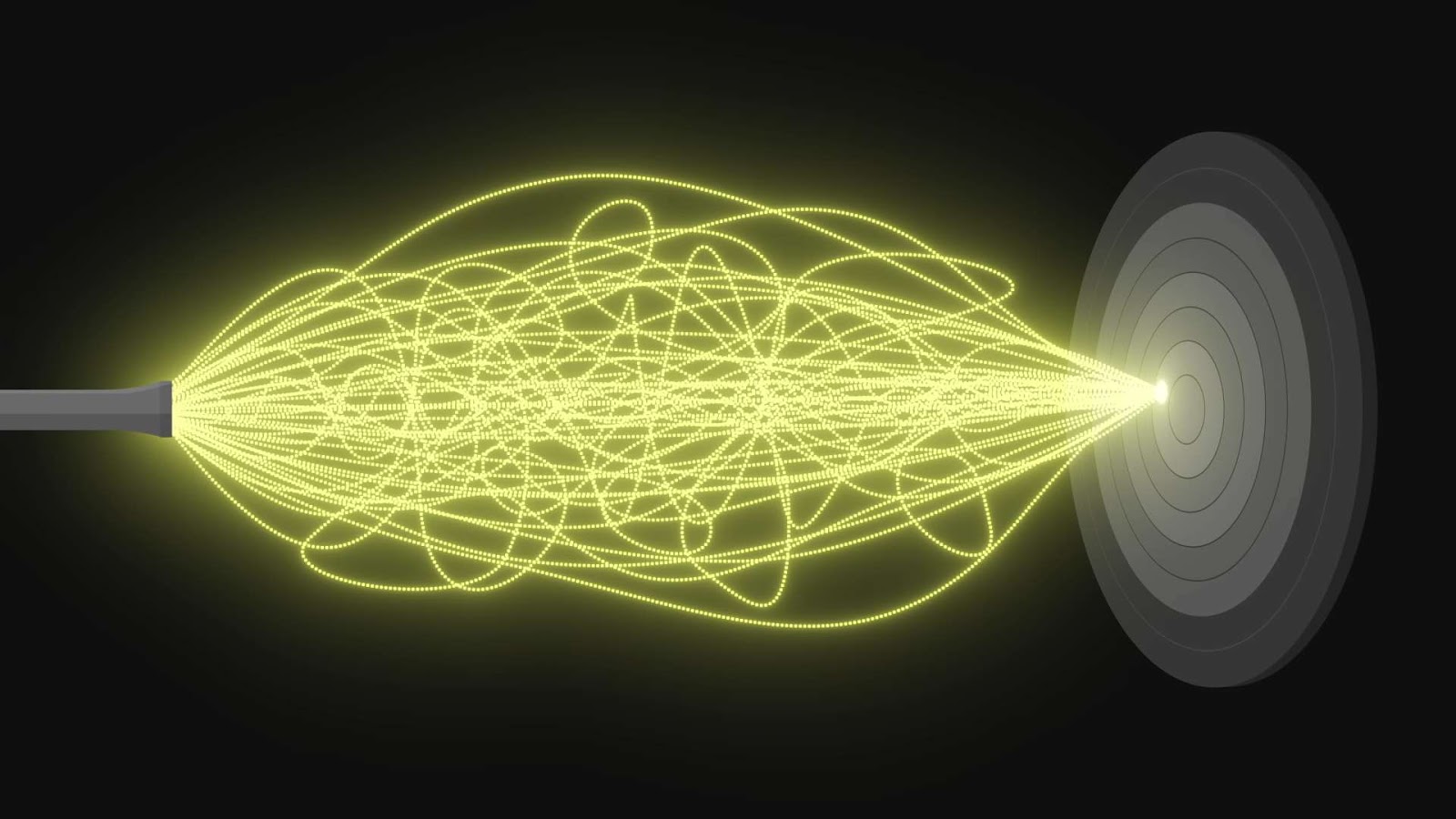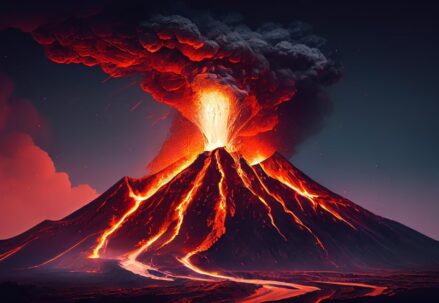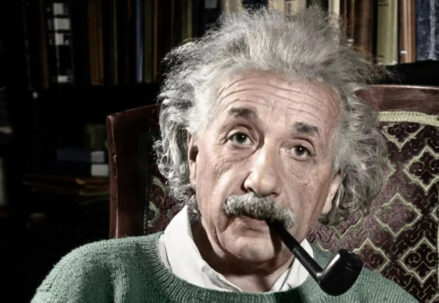Within the realm of theoretical physics, a fascinating rivalry unfolds as two prominent candidates compete for the coveted status of being the ultimate theory of everything: String Theory and Loop Quantum Gravity. These two theories have ignited the intellectual curiosity of physicists and cosmologists alike, presenting distinct vantage points into the fundamental essence of our cosmos. In the forthcoming exploration, we shall embark on a profound journey into the core elements of both String Theory and Loop Quantum Gravity, examining, analyzing, and discerning their foundational tenets, consequences, and hurdles.
Unlocking the Mysteries of the Universe: The Fascinating World of String Theory
Deep within the realm of theoretical physics lies a captivating concept known as String Theory. This groundbreaking theory takes us on a journey to the very essence of the cosmos, proposing that the building blocks of our universe are not mere points or particles but tiny, vibrating strings. These minuscule strings, like the keys of a cosmic piano, resonate in various modes, each corresponding to the diverse particles we encounter in the Standard Model of particle physics.
Key Points about String Theory
Let’s dive deeper into the intriguing world of String Theory and explore some of its key facets:
Unified Theory: The Grand Pursuit of Unity
String Theory embarks on a quest to achieve something truly grand – the unification of all fundamental forces in nature. Imagine a symphony where gravity, electromagnetism, and the strong and weak nuclear forces all play in harmony, conducted by the strings themselves. The goal here is to weave these seemingly disparate forces into a single, harmonious framework, where they no longer stand apart but become interconnected threads of the cosmic fabric.
Extra Dimensions: Expanding Our Horizons
Beyond the familiar three dimensions of space that we experience daily, String Theory dares to venture into the uncharted territory of extra spatial dimensions. These hidden dimensions, curled up or extended beyond our perception, offer a possible solution to some of the universe’s most perplexing mysteries. For instance, the hierarchy problem, which questions why gravity is so much weaker than other forces, finds a potential answer in these additional dimensions.
Multiverse Hypothesis: A Cosmic Tapestry of Universes
String Theory opens the door to an awe-inspiring concept – the multiverse. Within this theory, the cosmos is not singular but a vast tapestry of universes, each with its own unique set of physical laws and constants. Imagine a multitude of universes, like different melodies in a cosmic symphony, each playing out its own narrative. The multiverse hypothesis tantalizingly suggests that our reality is just one strand in this cosmic web, with countless others waiting to be discovered.
Navigating the Enigmatic Strings
As we delve further into String Theory, it’s essential to grasp the potential implications and applications of this captivating concept:
- Grand Unification Potential: The unification of fundamental forces in String Theory could lead to a deeper understanding of the universe’s inner workings, potentially unlocking secrets that have eluded us for centuries;
- Technology and Innovation: Research into String Theory often requires cutting-edge technology and mathematical frameworks. This not only advances our theoretical knowledge but also drives technological innovation, benefitting various fields beyond physics;
- Cosmic Conundrums: String Theory offers fresh perspectives on age-old mysteries like dark matter, dark energy, and the origins of the universe. By exploring these enigmas through the lens of String Theory, we may gain insights that reshape our cosmic understanding.
Exploring the Depths of Loop Quantum Gravity
In the quest to reconcile the formidable forces of gravity and quantum mechanics, Loop Quantum Gravity takes a remarkable detour. This revolutionary approach unveils a universe that is anything but continuous. Let’s delve into the intricacies of Loop Quantum Gravity, where space and time are fractured into minuscule building blocks, where singularities bow out gracefully, and where the very geometry of the cosmos dances to the quantum tune.
Discrete Space-Time: Unveiling the Quantum Loops
In the world of Loop Quantum Gravity, space and time shed their continuous attire and don the garb of discreetness. This groundbreaking concept introduces the notion of “quantum loops.” These quantum loops are infinitesimal, indivisible units of space and time, analogous to the pixels that construct the images on your screen. Here’s what you need to know:
- Quantum Loop Basics:
- Quantum loops are the building blocks of space-time, representing the tiniest possible pieces of the universe;
- They are reminiscent of loops in a fabric, interconnected and forming the intricate tapestry of reality;
- These loops come together to weave the canvas upon which the universe is painted, reshaping our understanding of the fundamental nature of space and time.
Resolution of the Singularity Problem: From Black Holes to Cosmic Bounces
One of the most intriguing aspects of Loop Quantum Gravity is its potential to resolve the enigmatic singularity problem. Singularities, those enigmatic points where the known laws of physics break down, have long been the riddle at the core of black holes and the birth of the universe. Loop Quantum Gravity, however, offers an elegant alternative – the concept of bounce scenarios:
- Bounce Scenarios Unveiled:
- Singularities vanish: In Loop Quantum Gravity, the crushing singularities that once marked the inscrutable centers of black holes and the Big Bang fade into oblivion;
- Cosmic rebirth: Instead of catastrophic collapses, these singularities transform into cosmic bounce points, where the universe undergoes a graceful rebirth, akin to a trampoline effect;
- No more information paradox: This resolution provides a possible escape from the infamous black hole information paradox, shedding light on the fate of information that falls into these cosmic giants.
Quantum Nature of Geometry: A Glimpse into the Microcosmos
Loop Quantum Gravity takes the audacious step of viewing the fabric of space itself through a quantum lens. The very geometry of the universe is reimagined in this theory, offering profound insights into the microstructure of reality:
- Quantum Geometry Insights:
- Quantum geometry redefines space: In this framework, space is not just empty expanses; it is a dynamic and ever-changing entity, subject to the quantum fluctuations of its fundamental building blocks;
- Lattice-like structure: Imagine space as an intricate lattice, woven from quantum loops. These loops define the fundamental structure of the cosmos, akin to atoms forming molecules;
- New dimensions unfold: Loop Quantum Gravity opens the door to additional dimensions beyond the familiar three of space and one of time, providing a richer tapestry for exploring the universe’s mysteries.
Comparing String Theory and Loop Quantum Gravity: A Comprehensive Analysis
In the realm of theoretical physics, two groundbreaking theories have captured the imaginations of scientists and cosmologists alike: String Theory and Loop Quantum Gravity. Each of these theories delves into the mysteries of the universe in its unique way, offering distinct approaches and perspectives. Let’s explore these captivating theories in depth, examining their approaches, unification goals, and the elusive quest for experimental verification.

Approach: String Theory’s Dance of Vibrational Strings vs. Loop Quantum Gravity’s Quantized Space-Time Structures
String Theory: At the heart of String Theory lies a mesmerizing concept – tiny, vibrating strings. These strings, unimaginably minuscule, are the building blocks of the universe. They vibrate at different frequencies, akin to the harmonious notes of a cosmic orchestra. Each vibrational mode corresponds to a different particle or force, creating a tantalizing framework that attempts to explain the fundamental nature of matter and energy. It’s like the universe is a grand symphony, and the strings are the notes that compose it.
Loop Quantum Gravity: In stark contrast, Loop Quantum Gravity ventures into the very fabric of space-time. Instead of strings, it quantizes space-time itself. Imagine the cosmos as an intricate web, where the threads of space-time are woven into loops, resembling the stitches of a celestial tapestry. These loops are incredibly tiny, on the order of Planck lengths, and they give rise to the fundamental properties of the universe. It’s as if reality is a patchwork quilt, with each loop representing a discrete element of space and time.
Unification: The Cosmic Quest to Bind All Forces
String Theory: String Theory harbors an audacious goal – to unify all known forces of the universe, including gravity. This ambitious endeavor seeks to reconcile the disparate realms of quantum mechanics, which governs the subatomic world, and general relativity, which describes gravity on a cosmic scale. The theory strives to demonstrate that all particles and forces are interconnected through the harmonious vibrations of the strings, aiming for a grand synthesis of the laws of the universe.
Loop Quantum Gravity: Loop Quantum Gravity, on the other hand, takes a more focused approach. Instead of aiming for a comprehensive theory of everything, it concentrates solely on the quantization of gravity. It seeks to understand the nature of space-time at the quantum level, hoping to unveil the microscopic structure of the fabric that underlies the gravitational force. This specialized focus allows Loop Quantum Gravity to tackle one of the most enigmatic aspects of the cosmos head-on.
Experimental Verification: The Elusive Quest for Cosmic Confirmation
Both String Theory and Loop Quantum Gravity face a common challenge – the lack of experimental evidence to validate their ideas. In the pursuit of cosmic truth, scientists have encountered numerous hurdles when attempting to test the predictions of these theories. Despite this formidable obstacle, researchers continue to explore innovative avenues for potential confirmation. Read about the captivating world of photons and the quantum theory of light. Explore its mind-bending secrets in this illuminating article.
Conclusion
String Theory and Loop Quantum Gravity offer distinct approaches in the quest for a comprehensive understanding of the universe. Each path boasts its own set of merits and obstacles, yet neither has definitively secured confirmation or refutation up to this point in time. The relentless pursuit of empirical validation persists, and only the passage of time will unveil whether either, or perhaps both, will ultimately ascend to the status of the ultimate theory encompassing all. As our comprehension of these paradigms delves deeper, our ability to unravel the enigmatic secrets underlying the cosmos concurrently advances. Be prepared for forthcoming advancements in the captivating realm of theoretical physics!





